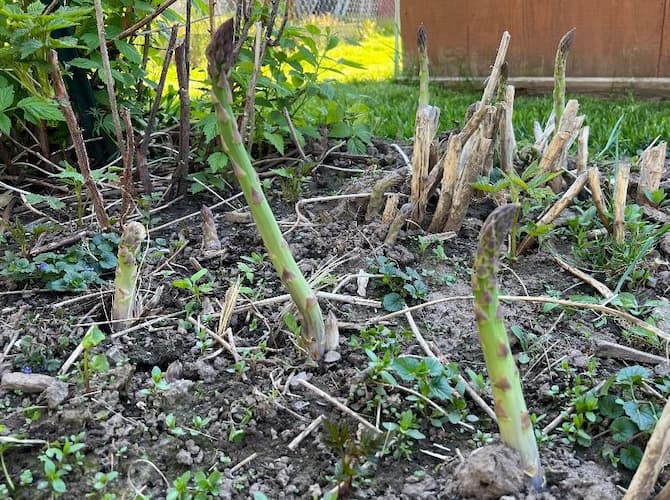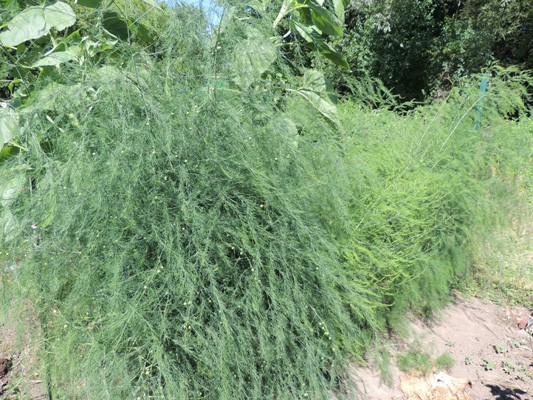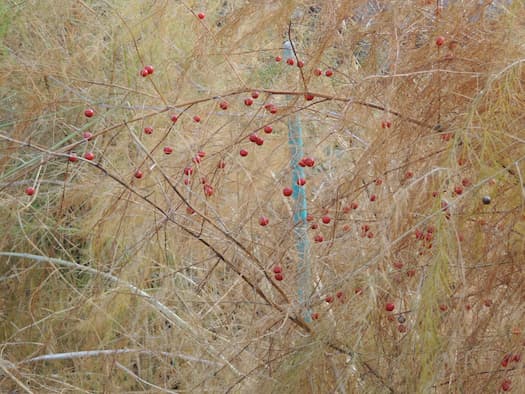How to Grow Asparagus Plants

About Asparagus Plants
Asparagus plants are grown for the immature, tender shoot or spear (or stalk). It is harvested early in the spring. As a matter of fact, it is the first vegetable of spring. Asparagus is a perennial plant, which multiplies through its root system. And, the plants thrive for many years with little care. Also, they grow well in areas that do not have a mild winter. You may find it difficult to consume a sizeable crop. Fortunately, storing asparagus is quick and easy. they can be put in the refrigerator for a short period of time. Or you can freeze them for longer-term storage. Use this guide on “How to Grow Asparagus Plants” to grow a great crop year after year.
If you’re looking to eat healthy, you’ve chosen the right vegetable. Asparagus spears have no fat or cholesterol. The spears are a tender and mild-tasting vegetable. They can be eaten raw or cooked. It is most often steamed. Asparagus is a real delicacy in the vegetable world. It is only harvested from early to late spring. A couple of weeks after the last frost in your area, the stalks should be allowed to grow, to allow the development of the root system for future crops. The leaves will eventually open to a fern-like plant. While most of us plant the roots, the plant does produce seeds.
Did You Know? Asparagus plants are one of just two perennial vegetables, that lives for several years. Rhubarb. is the other perennial vegetable.

Varieties of Asparagus Plants
There are few varieties of Asparagus. Martha Washington is the most common. Jersey Knight is also common. Purple Passion is a unique and sweet variety.
Propagating Asparagus Plants
The plants are most often propagated by roots. If you dig up roots in your garden, separate the roots. Make certain there is at least one bud on each root cutting. While you can use this method, most people buy roots from garden stores.
Asparagus plants can be propagated from seeds, too. You can buy seeds from a seed company. Also, you can harvest seeds from existing plants. After the plant has died in the fall, harvest the red berries from the plant. Spread the berries out on a screen and let them completely dry for at least 3-4 weeks. THen, harvest the seeds from inside of the berries. See the picture below.

How to Grow Asparagus Plants

Propagate plants by roots or seeds. Plants grown from seed take much longer to develop. The picture of a young, first-year asparagus plant (shown above) was taken in early August. It was started from seed in May. Indeed, patience is a virtue, as this plant produces very lightly in the second year. It will take three years to really become productive. As a result, most growers buy and plant the roots.
Tip: When buying roots, read the packaging. It should say “first-year roots” or “second-year roots”. Second-year roots cost more but produce a season earlier.
Asparagus plants like loose and slightly sandy soil rich in organic material. Importantly, the soil should drain well. The plants grow in clay soil. However, it is harder for plants to spread roots and push the tender stalks out of the soil.
Grow plants in full sun and well-drained soil. The ideal soil pH is 6.0 to 8.0. Also see pH levels for vegetables
Allow the stalks to develop into fern-like plants after the harvest period. They will grow 4-5 feet tall. Mulch around the plants, to help retain water, and to keep the weeds down.
Water thoroughly during periods of summer drought.
Cut the plants down to ground level, after frost has killed the plant. In cold climates, add a thick layer of mulch, to protect the roots from deep ground freezes. In the spring, gently rake the excess mulch away from the asparagus bed.
Did you Know? Several publications recommend sprinkling salt around the plants to promote their growth. There is no known benefit of adding salt.
Also, See:
Soil Temperatures – Ideal germination temperature by vegetable
Ideal Soil pH – by vegetable
Asparagus Plants - Insects and Plant Disease
Asparagus is susceptible to a variety of pests, typical of any tender plant in your garden. These include Aphids, Asparagus Beetles, and Cutworms. Insect problems most frequently occur after the spring harvest. Damage by insects can weaken or kill the plant. The plant needs a strong growing season to promote healthy root growth for next years’ crop.
Few diseases affect plants early in the spring. Asparagus is susceptible to root rot, especially in wet soils. Rust diseases can also affect it.
Harvesting Asparagus Spears
In the spring, the shoots can grow up to 10 inches a day. Cut young shoots off with a sharp knife, just below the surface of the soil. knife, just below the surface of the soil. Pick spears when they are several inches long, and the stalk is still tender. You can cut all stalks that appear for about three to four weeks. After this time, allow the plant to grow.
Did you Know? Asparagus is commonly found along roadsides in rural areas, especially near old, abandoned farmland. You can harvest them along the side of the road in the spring if you know where to look.
How to Store Asparagus Spears
Storing Asparagus is easy. You can keep it in the refrigerator for a short period of time. Or, it can be frozen for longer-term storage.
Storing Asparagus in the Refrigerator:
- First, rinse off the spears.
- Next wrap a damp paper towel around the ends.
- Then, place the spears in a plastic baggie, and leave the end open.
- Use Asparagus spears within 3 to 4 days.
Storing Asparagus in the Freezer:
- First, cook it in boiling water for 2 to 3 minutes.
- Next, put it into a large bowl of ice water.
- Drain and dry the spears.
- Seal the spears in an air-tight baggie, removing as much air as possible
- Place it in the freezer for up to 12 months.
Plant Hardiness
Asparagus spears are the first vegetable you harvest in the spring. Frost and freezes can damage the tender young shoots. Tender stalks turn black and die off. If a hard frost is expected, cover the stalks to protect the spears. As a perennial, it will last indefinitely, with a little care and feeding.
Asparagus Recipes
Did you Know? There is a National Festival for Asparagus! Oceana County, Michigan has laid claim as the Asparagus Capital of the United States.
Recipes: May we suggest:
Please support our site. Shop for:
- rmmatthews100@hotmail.com
- 585-721-6528
- Rochester, NY
©1999-2024 GardenersNet.Com, All Rights Reserved

